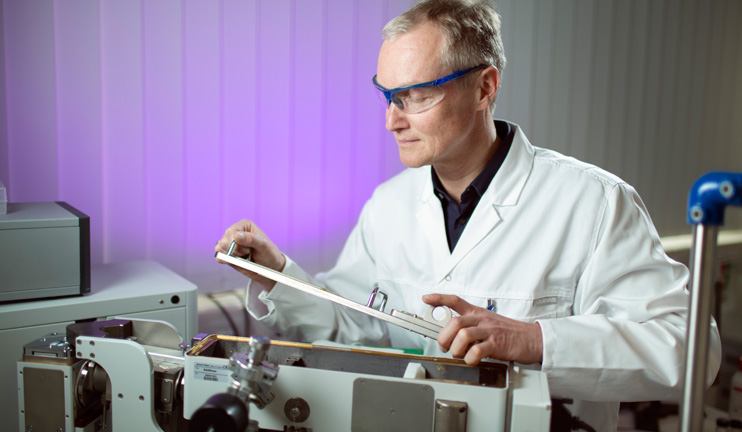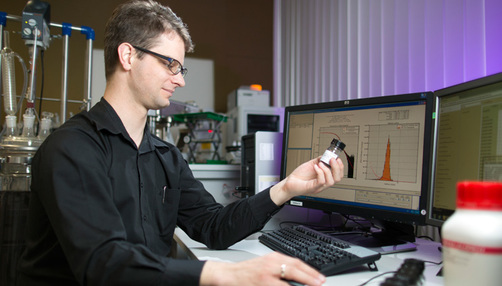
Dr. Andreas Thünemann prepares the SAXS device for determining the size of nanoparticles.
Source: BAM/Thomas Köhler
Nanoparticles have long been used in many everyday products such as cosmetics or food. These particles are approximately a thousand times smaller than the diameter of a human hair and cannot be seen with the naked eye. They are used on the basis of their particular physical-chemical properties in order to improve qualities such as the colour or longevity of products.
EU Labelling requirement for increased safety
However, the use of nanotechnology is controversial, since its effects on people's health and the environment have not yet been thoroughly researched. The EU is working on labelling requirements for different industries in order to regulate the use of these substances. These have applied to cosmetics since 2013 and to food since 2014.
The labelling requirement demands that manufacturers must prove precisely how large the nanoparticles are and what proportion of the final product they form. If half of the contents are smaller than 100 nanometres the product must be labelled according to the EU. Like environmentalists or consumer advocates, the authorities check these details.
However, there currently is no unified process to determine the exact size of particles and their proportion of the final product. This should change in future, thanks to BAM's research. BAM is developing standard methods that will allow manufacturers, testers and ultimately also consumers to determine nanoparticles unequivocally.

The analysis software co-developed by Brian R. Pauw is used around the world.
Source: BAM/Thomas Köhler
BAM researchers are developing standards for the analysis of nanoparticles
Dr. Andreas Thünemann, head of BAM's Polymers in Life Science and Nanotechnology Division, wants to standardise the analytical methods for nanoparticles using unified software. To this end he has developed two open-source software programs with his team. These allow the quantity and volume of nanoparticles to be determined using the small angle X-ray scattering (SAXS) method. Anyone working with this method can download the BAM software and use it on their SAXS devices. Previously these devices were offered by different manufacturers with their own software, which meant there were no reliable results. Only BAM allows a reference method for unified analysis with its program.
The software-based standard analysis has already been tested in a ring trial in over 20 laboratories around the world. BAM provides samples with nanoparticles that must be analysed using the BAM software. If the results agree, this verifies the BAM method. The level of interest in the software suggests Thünemann is right: "Our program has been downloaded over a thousand times since mid-2015."


